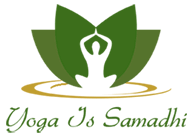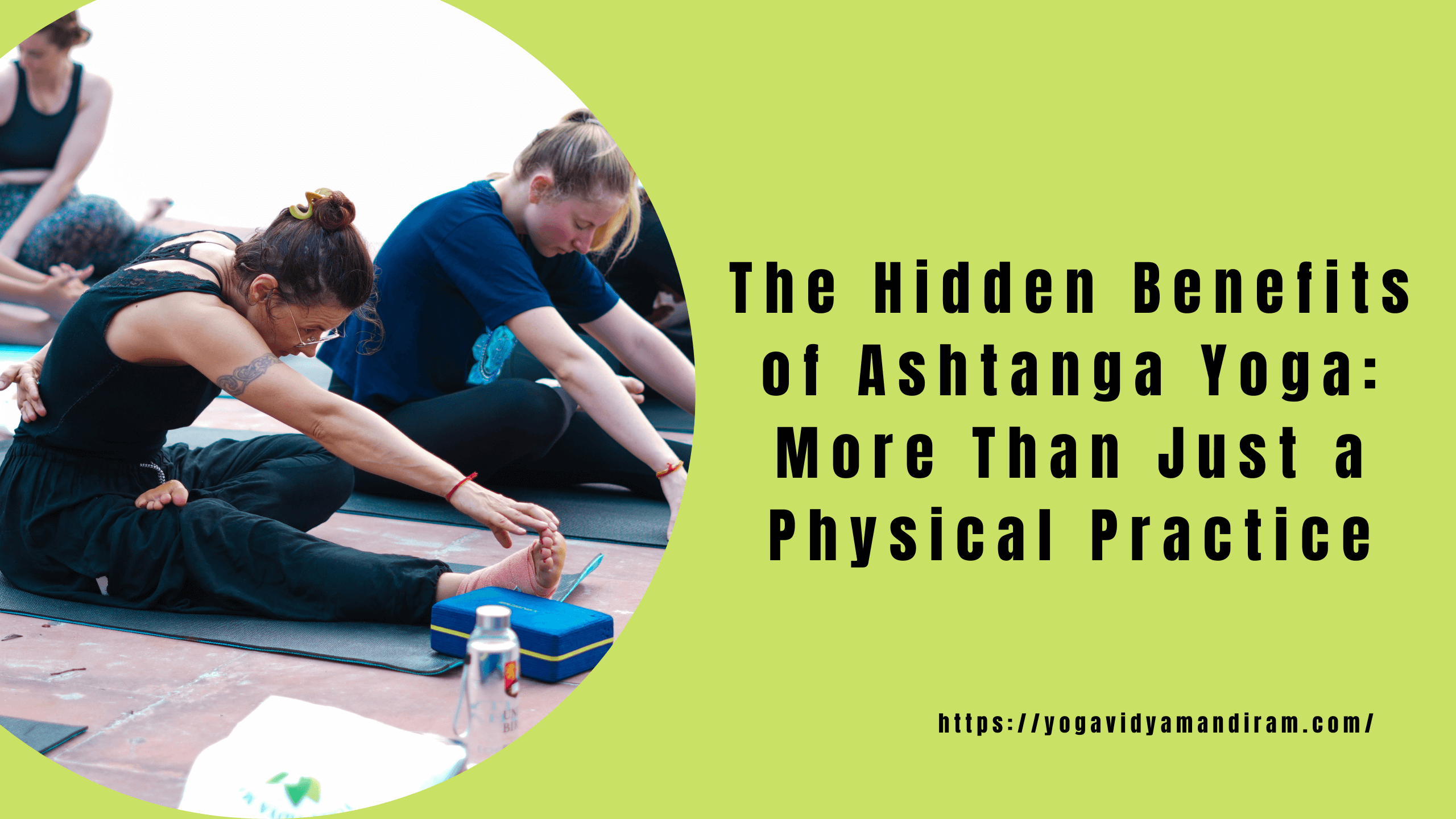In a world where fitness can be the order of the day, it is not difficult to look at yoga as just another method of tightening your body and making it flexible. But imagine, to you, that there is so much more to Ashtanga Yoga than physical ability? Getting below the surface of this dynamic practice may open the gatesway to a series of deep advantages that may go well beyond the boundaries of your mat. Ashtanga can change not only the body, but the mind and the soul, as well, not to mention the capacity to be mentally sharp. Take this ride with us when we uncover the unknown wonders of the Ashtanga Yoga where every breathing will start a new knowledge about us and create a good balance in life. Be it a veteran practitioner or a simple inquisitive reader, it will be worthwhile to be awakened with such insights that might very well reshape your views forever!
Introduction: Why Ashtanga Yoga is gaining popularity
Ashtanga yoga is not just about a cool exercise, but it is a personal experience that has won many hearts. This active practice gained momentum in recent years and attracted persons of any social status aiming not only at physical power but also on clarity of mind and emotional stability. What is so special about Ashtanga? It is an ancient practice that involves breathing with movements, and it makes one feel energized and meditated. Regardless of whether you are a beginner in yoga or you have practiced it long enough, there is something that is distinctly strong about immersing yourself in the organized stream of Ashtanga. Let us look at the untold advantages that lie to be discovered behind its physical reputations.
Understanding the origins and principles of Ashtanga Yoga
Ashtanga Yoga has ancient Indian origins dating back to the times of the great sage Patanjali who in his masterpiece text, the Yoga Sutras popularized the practice. This system stresses upon the systematic practice of yoga.
Ashtanga is fundamentally a combination of six series of postures connected with breathing and movement. The sequence is constructed on top of another, and it forms a dynamic flow that develops strength and flexibility.
The guidelines on this practice are Tristhana: posture (asana), breathing (ujjayi), and gaze (drishti). These are the elements that are complementary to each other in order to foster concentration and awareness.
Besides, Ashtanga is constructed on the concept of self-discipline or tapas. This devotion results in personal development not only in the mat but also in off-the-mat life. Practitioners are taught not only physical alignment but also a resilient mind that can help them go through this transformative practice.
The Eight Limbs of Ashtanga Yoga and how they go beyond physical practice
Ashtanga Yoga is based on the old philosophical foundation, and it has eight limbs that help to lead the practitioners to the holistic way of life. These appendages act as self-discovery and self-development guide.
Yama and Niyama are the first two limbs that deal with ethical behavior and self discipline. They motivate us to develop compassion, honesty, and satisfaction. This seminal literature influences our way of dealing with the world.
Then there is Asana- physical poses that most people would relate to yoga. Although they gain strength and flexibility, it is only one of the sides of the practice.
Pranayama brings on board breathing. We get to control the stress through control of our breath.
Then, Pratyahara (senses withdrawal), Dharana (concentration), Dhyana (meditation) and Samadhi (absorption). These stages of the end enhance our level of awareness more than just physicality. Combined, these eight limbs form a strong system that promotes the connection between the mind and body as well as the spiritual development – much more than occurs on the mat.
Mental and emotional benefits of Ashtanga Yoga
Ashtanga Yoga also has deep psychological and emotional applications which go way beyond the mat. At the end of the sessions, practitioners frequently complain about a sense of clarity and focus. The discipline taught by the structured nature of the practice is based on building a strong mind.
Pranayama or breath control is a very important aspect of Ashtanga. This method encourages one to relax and be less anxious. It is easy to manage stress because many learn to breathe deeply and consciously.
Besides, the meditative details promote self realization. On linking the movement to breathing, people become more mindful beyond yoga practice. Emotions of gratitude and satisfaction usually emerge in these instances of self-reflection.
Another major component in Ashtanga Yoga is community. Working with others builds relationships that result in the emotional support that improves the well-being.
With practice, most of them find resilience, which is the ability to overcome adversity in life with a grace that was previously unknown to them.
Physical benefits of Ashtanga Yoga
This is a dynamic and vigorous physical exercise that Ashtanga Yoga provides and promotes the use of strength, flexibility, and endurance. Every pose is made to be a transition to the next, which forms a dance that is a challenge to the body and mind.
Ashtanga can be practiced on a regular basis and it is good at making your body tight. The sequences involve different muscle groups resulting into enhancement of definition with time. You will find that you increase in core stability with every series.
Another important advantage is flexibility. You get yourself steadily reaching deeper stretches as you pass through the postures. This not only relieves tension, but also enhances increased range of movement in day to day activities.
In addition, the constant movement enhances the heart health as it increases your heart rate as you train. This may result in greater endurance to both daily chores and leisure time.
There is a general feeling of vitality that comes with this practice which is a sense of invigoration that can touch even the other facets of life even after the yoga practice.
Also visit: 200 Hour Yoga TTC in Rishikesh
How to incorporate Ashtanga Yoga into your daily routine
Ashtanga yoga is one of the practices that can change your life upon integration into your daily routine. Get started with a small step of 15 minutes a day. Find some place where you can be relaxed and focused.
Start with the Sun Salutations so as to wake up your body. This movement series is a warm up, in which your muscles are ready to do more serious poses.
Think about how to make full practice time on certain days of the week. This can be slowly increased with time as you get accustomed to the sequences. Consistency is key.
And use internet applications or websites that take you through routines in case you are not sure of the postures. Most of them provide modifications and thus are reachable irrespective of level of skills.
Lastly, incorporate mindfulness into daily routine, be it taking a stroll or having a cup of tea, taking the principles of Ashtanga out of the mat and into the moments of life.
Testimonials from practitioners on the hidden benefits they’ve experienced
Practitioners of Ashtanga Yoga often share transformative stories that highlight its hidden benefits. One yoga enthusiast, Sarah, discovered a newfound sense of purpose and clarity. She credits her regular practice with helping her navigate life’s challenges more gracefully.
John, another dedicated practitioner, emphasizes mental resilience. He notes that the discipline required in Ashtanga has spilled over into his professional life, enhancing his focus and productivity at work.
Then there’s Emily, who speaks about emotional healing. Through deep breathing and mindful movement, she found a way to process past traumas. It’s as if each pose released layers of stress she didn’t even know she was holding onto.
These personal experiences illustrate how Ashtanga transcends physical fitness—offering deeper insights into one’s mind and spirit that aren’t immediately obvious but profoundly impactful nonetheless.
Common misconceptions about Ashtanga Yoga and debunking them
Many people think Ashtanga Yoga is only for the super fit or flexible. This couldn’t be further from the truth. The practice welcomes all bodies, regardless of age or ability. It’s about progress, not perfection.
Another misconception is that it’s just a workout. While Ashtanga does provide physical benefits, it emphasizes breath and mindfulness, turning it into a holistic practice that nurtures both body and mind.
Some also believe you must attend classes every day to see results. However, incorporating even a few sessions per week can yield significant improvements in strength and mental clarity over time.
Lastly, many fear they’ll have to memorize sequences before starting. In reality, instructors guide beginners through each posture at their own pace until they feel comfortable moving forward.
More Details: 300 Hour Yoga Teacher Training in Rishikesh
Conclusion: Why everyone should give Ashtanga Yoga a try.
Ashtanga Yoga is a treasure trove of rewards, which is many times more than merely physical in nature. Practitioners tend to enjoy a state of exceptional mental clarity and emotional stability as they pass through their practice. When combined with breath, movement, and focus, this brings a chance of self-exploration and personal development.
Those who have adopted Ashtanga complain that they feel more focused, balanced and in touch with themselves. Their daily lives find a stress management and concentration tools. It is a voyage of discovery of different levels of strength, both physical and mental, in each session on the mat.
This active practice will invite exploration in your own time, regardless of whether you are in need of better flexibility or a sense of peace in yourself. Ashtanga Yoga can be transformative with its origins deepened in the traditional world but which could be applied in the contemporary life.
Ashtanga is the place to visit in case any person is interested in the improvement of their well-being or merely wants to experience something different. The interaction with this approach may not only result in a more healthy but also an increased awareness and mindfulness that transpire throughout every corner of everyday life. Adoption could be all that will allow them to see the riches that lie beneath the surface.


Leave a Reply